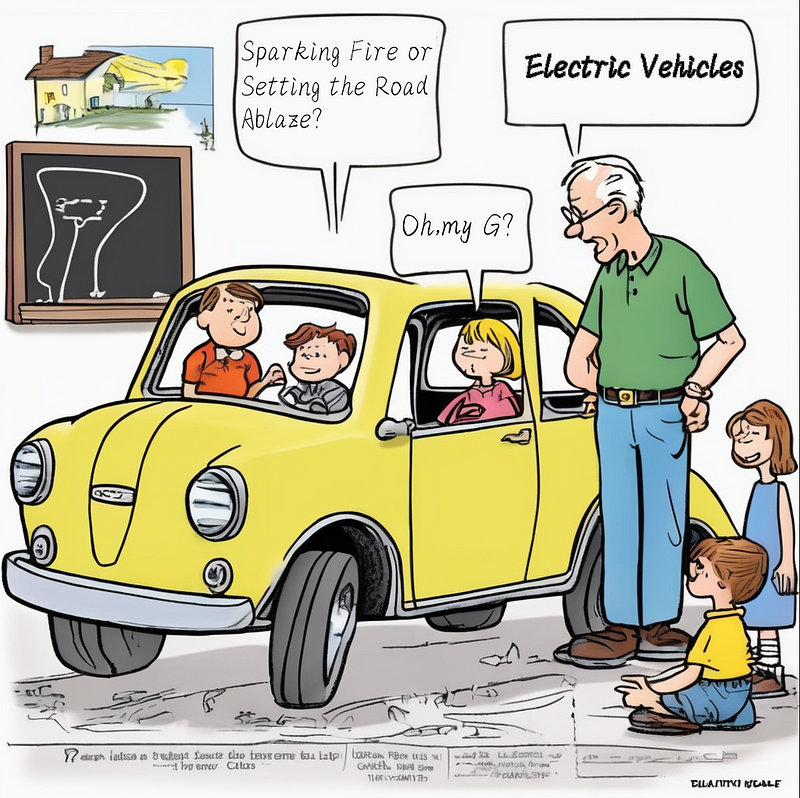Electric Vehicles: Navigating Safety and Fire Risks
Written on
Chapter 1: Understanding Electric Vehicle Fires
Electric vehicles (EVs) have been the center of attention lately, but are they genuinely safe? With their rising popularity, questions regarding their fire safety have surfaced. When they do ignite, why is it so challenging to extinguish the flames? Let's delve into these intriguing topics and enhance our understanding of electric vehicles.

- What Causes Fires in Electric Vehicles?
The main culprit behind fires in electric vehicles is the combustion of their batteries. Most modern EVs utilize lithium-ion batteries, renowned for their potent energy capabilities. Issues such as improper charging, battery punctures, or external impacts can result in short circuits, leading to thermal runaway and subsequent fires. Performance-oriented electric vehicles often employ lithium-ion batteries with nickel-cobalt-aluminum (NCA) chemistry, which, despite their benefits like rapid charging and high energy density, have a relatively low self-ignition temperature of 200 degrees Celsius, making them more susceptible to fire incidents.

- How to Safely Handle an Electric Vehicle Fire?
If you ever find yourself in a burning electric vehicle, your first action should be to exit immediately and call for assistance. It's crucial to prioritize safety over attempting to extinguish the fire. Emergency responders follow established protocols that include using substantial amounts of water, cutting through vehicle panels, and disconnecting the power supply. While water and fire blankets help cool the battery and limit the spread of flames, extinguishing a lithium-ion battery fire is notoriously difficult. Tesla’s Model S Emergency Response Guide notes that cooling the battery can require up to 3,000 gallons of water, a process that may take around 24 hours. To combat such fires effectively, firefighters often use large water tanks or create temporary reservoirs.

- Fire Risks Aren't Just for Electric Vehicles
Traditional combustion engine vehicles also carry significant fire risks. Their reliance on flammable fuel means that a major collision could lead to a punctured fuel tank, potentially igniting a fire or explosion. Interestingly, data from electric vehicle manufacturers suggest that fires occur more frequently in combustion engine vehicles compared to their electric counterparts. Yet, this data may not be entirely comforting, as the types of vehicles, their ages, and usage patterns vary widely.

- How Are Manufacturers Mitigating Battery Hazards?
Automakers adhere to strict safety regulations when designing electric vehicles, focusing on crash testing and electrical safety. Many EVs are equipped with liquid cooling systems to manage heat buildup during charging, thereby reducing fire risks. The structure of the vehicle is reinforced for battery security, and batteries must meet stringent standards for leakage, insulation, and explosion prevention during charging, as well as maintaining electrical safety post-collision. While all electric vehicles on the market are generally considered safe, it's vital to recognize that no vehicle is entirely free of risk. Severe impacts can still lead to battery deformation and increased fire hazards.

- The Electric Vehicle Industry's Ongoing Evolution
While traditional combustion vehicles represent established technology, electric vehicles continue to evolve, uncovering new possibilities and challenges. Instead of fixating on their limitations, it's essential to seek solutions. With batteries at the core of electric vehicle performance, the focus is on advancing materials science. The market is currently dominated by lithium-ion and lithium-polymer batteries, but research is ongoing to develop alternatives that offer greater energy density, quicker charging times, and improved safety. Innovations such as graphene and solid-state batteries are being explored in the quest for the ultimate energy solution for automobiles.

Electric vehicles are electrifying the automotive landscape, presenting both benefits and challenges. While concerns about fire safety persist, automakers and firefighters are actively enhancing safety protocols and technological advancements. By staying informed and embracing innovations in battery technology, we can confidently move towards a future where electric vehicles are safely integrated into our roads.

In this video, the creators discuss their experiences with nine different electric cars, trucks, and SUVs, sharing insights on which models they would choose again.
This video features a firsthand account of driving new electric cars until they ceased to function, providing a unique perspective on the durability of current EV technology.

